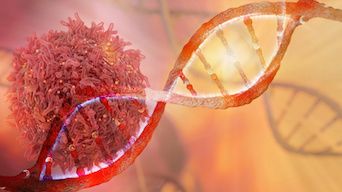Curing Muscular Dystrophy: A One Health Approach
For the first time, scientists have used gene editing technology to halt Duchenne muscular dystrophy in dogs, paving the path for a clinical trial in people.

A team of scientists recently used gene editing to make headlines and potentially save lives. In a study published in Science, the investigators used CRISPR gene editing technology to halt Duchenne muscular dystrophy (DMD) in dogs. Their work represents the first time CRISPR has been used to treat muscular dystrophy in a mammal larger than a mouse.
What Is CRISPR?
CRISPR—Clustered Regularly Interspaced Short Palindromic Repeats—is a gene editing technique based on bacteria’s natural system to protect itself from viral infections. For gene editing purposes, bacteria use CRISPR to cut up the DNA of invading bacterial viruses that might otherwise kill them.
RELATED:
- One Health to the Rescue: Intracranial Arteriovenous Malformation in a Dog
- AVMA 2018: One Health in Action - Collaboration Saves Lives
Although CRISPR is not the first gene editing technology, it is now considered the most advanced and precise method.
Gene Editing at Work
For the study, investigators from Texas, Massachusetts, and London used 4 beagles that shared the type of mutation most commonly seen in patients with DMD, which is 1 of 9 types of muscular dystrophy. In patients with DMD, a particular genetic mutation prevents the body from producing dystrophin, a protein that maintains muscle function.
The investigators used adeno-associated virus to carry the editing tool to exon 51, one segment of the dystrophin gene that causes the mutation. The investigators essentially “fixed” the mutated gene by splicing out the offending section. In 2 dogs the virus was injected in the lower legs; in the other 2 dogs it was infused intravenously.
Over an 8-week period, the gene editor effectively altered exon 51. According to the team, removing a section of the mutated dystrophin gene allowed the gene to make enough of the proper protein that muscles need to function—ultimately slowing the degenerative process.
Scientists have estimated that a 15% threshold is all that is needed to significantly help patients suffering from DMD. The single-cut CRISPR technique used in this study restored dystrophin by 92% in the heart and 58% in the diaphragm.
One Health Potential
Not only does the outcome of this study have positive potential for the veterinary community, but the investigators ultimately have their sights set on using CRISPR technology to cure DMD in humans, particularly children. DMD affects an estimated 1 in 5000 boys; the disease leads to muscle deterioration, heart failure and, invariably, death.
“Children with DMD often die either because their heart loses the strength to pump, or their diaphragm becomes too weak to breathe,” said study lead Eric Olson, PhD, director of the University of Texas Southwestern's Hamon Center for Regenerative Science and Medicine. “This encouraging level of dystrophin expression would hopefully prevent that from happening.” Based on the results of this study, he believes that this particular technique could benefit up to 13% of patients with DMD.
Before a human clinical trial can be considered, longer-term studies in dogs must determine whether dystrophin levels will remain stable or the gene edits will have any adverse effects.